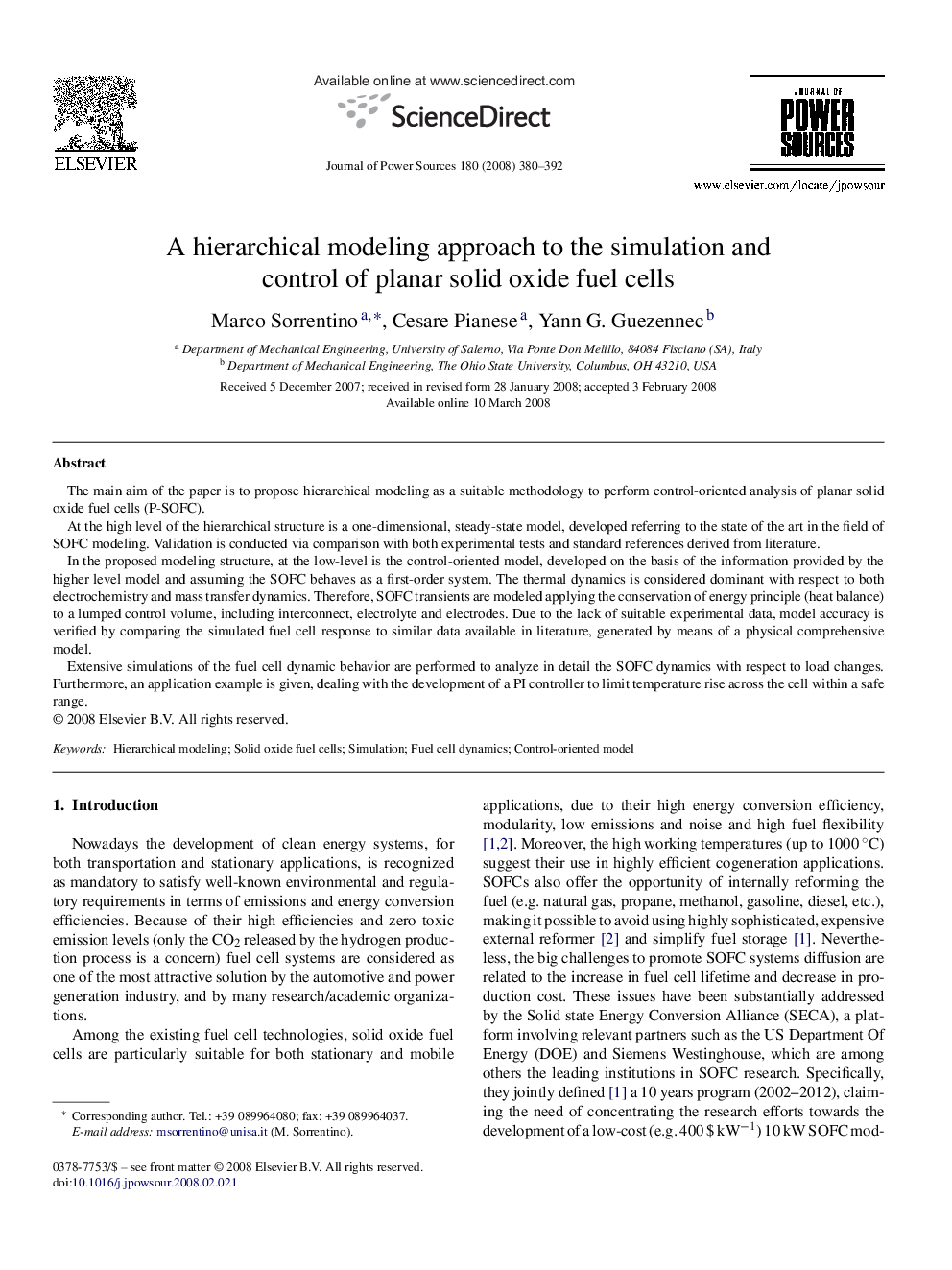| Article ID | Journal | Published Year | Pages | File Type |
|---|---|---|---|---|
| 1290585 | Journal of Power Sources | 2008 | 13 Pages |
The main aim of the paper is to propose hierarchical modeling as a suitable methodology to perform control-oriented analysis of planar solid oxide fuel cells (P-SOFC).At the high level of the hierarchical structure is a one-dimensional, steady-state model, developed referring to the state of the art in the field of SOFC modeling. Validation is conducted via comparison with both experimental tests and standard references derived from literature.In the proposed modeling structure, at the low-level is the control-oriented model, developed on the basis of the information provided by the higher level model and assuming the SOFC behaves as a first-order system. The thermal dynamics is considered dominant with respect to both electrochemistry and mass transfer dynamics. Therefore, SOFC transients are modeled applying the conservation of energy principle (heat balance) to a lumped control volume, including interconnect, electrolyte and electrodes. Due to the lack of suitable experimental data, model accuracy is verified by comparing the simulated fuel cell response to similar data available in literature, generated by means of a physical comprehensive model.Extensive simulations of the fuel cell dynamic behavior are performed to analyze in detail the SOFC dynamics with respect to load changes. Furthermore, an application example is given, dealing with the development of a PI controller to limit temperature rise across the cell within a safe range.
